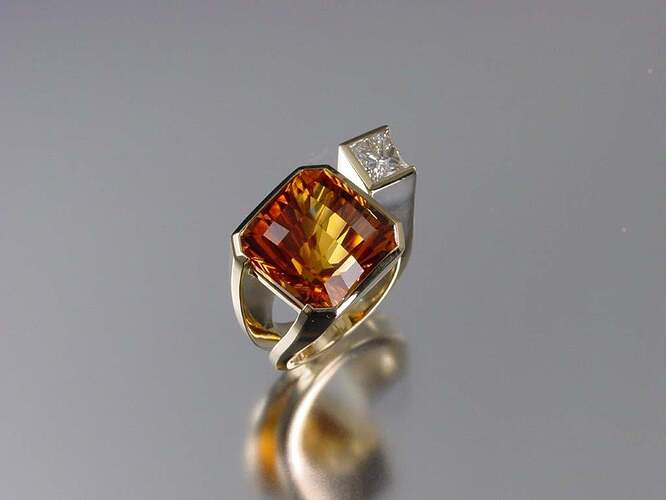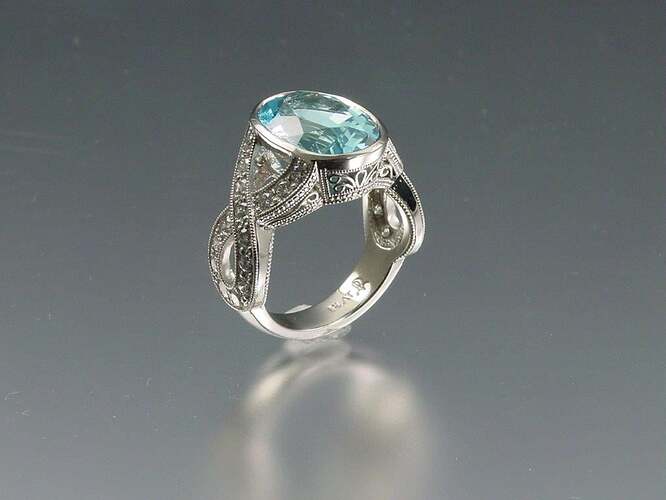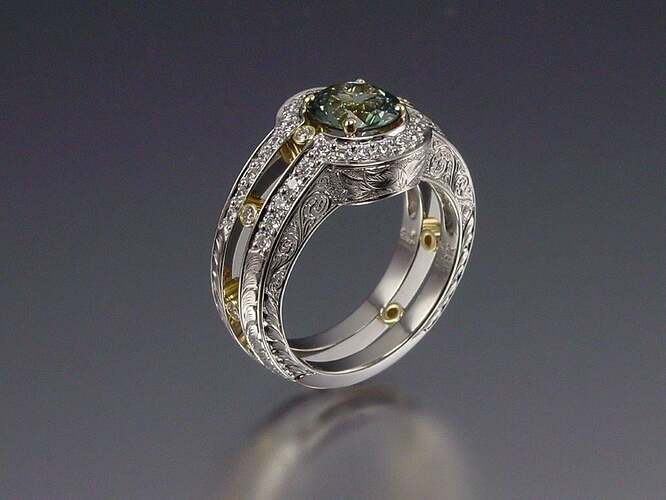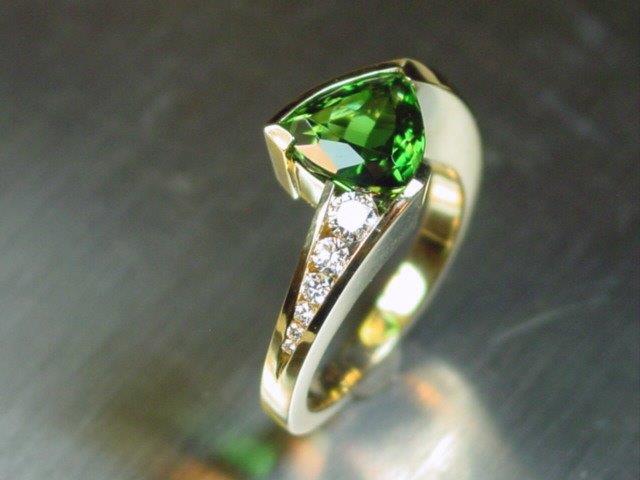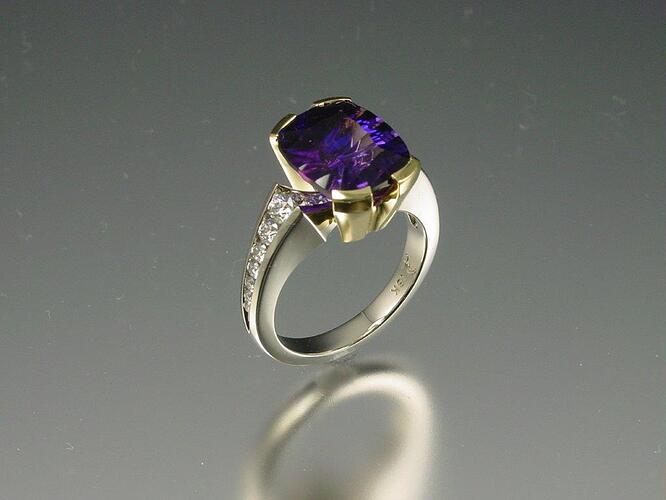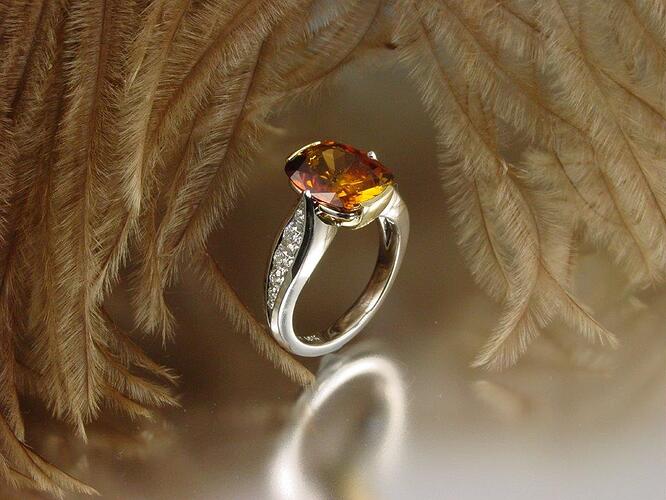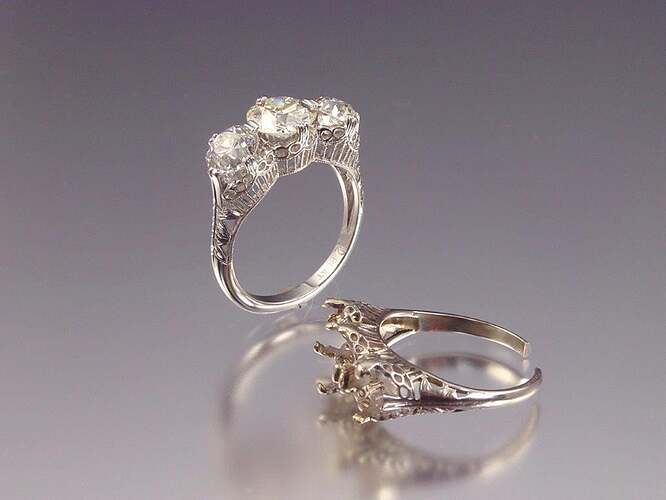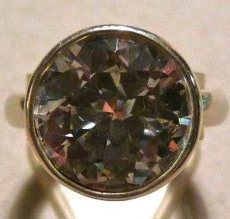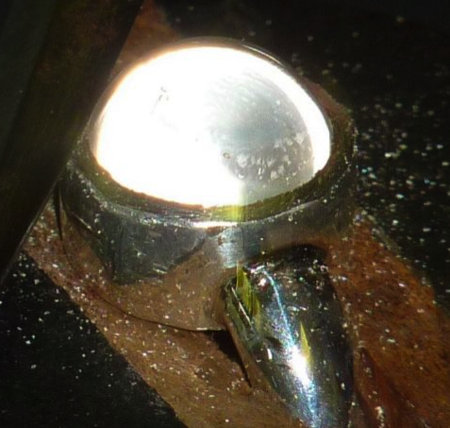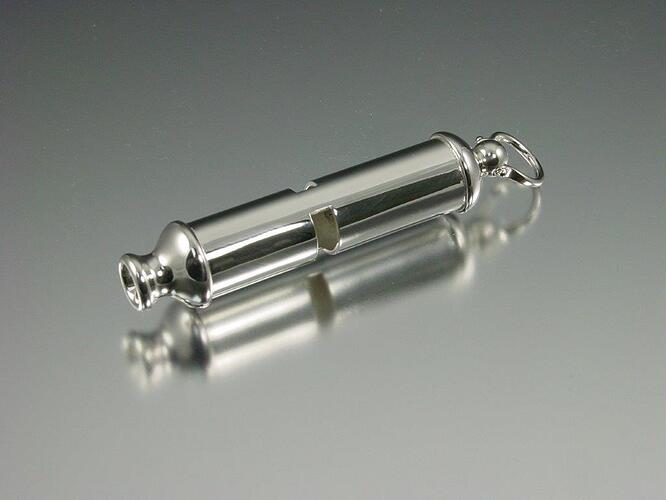In my (not important) opinion, the settings could definitely be
improved on, but then so can mine - always.
For my taste, the bezel for the purple stone is too thin, meaning
that getting the bezel down onto the stone is more difficult, and
also the top edge isnot even.
To improve it, I would use a thicker gauge of metal. This makes it a
simple job to sand/file the top edge perfectly level so that it’s
top edge will be beautifully neat after setting and can be burnished
to make a lovely frame for the stone, and it also means that the
extra thickness makes it easier to close the bezel onto the stone,
as the thicker metal has “squish factor”, ie it will compress to a
degree when turning the bezel, rather than springing out in adjacent
places to where you’re working, like thinner metal does. Besides
which, to my eyes, thicker metal looks better around a bigger stone.
Conversely, the metal used to make the bezels for the green stones
is too thick and the bezels are too tall. Those two things both make
the ratio of visible stone to setting wrong. Because the metal is
too tall, too much metal is turned down onto the stones, obscuring
them too much, and because the metal is too thick, there is just too
much gold framing these small stones.
To improve it, I would make the bezels out of a thinner gauge of
metal (and certainly thinner than that used for the big stone) and
make the height of the bezels above the stones’ seats, less tall.
The settings would be a little less chunky looking, and more of the
green stones’ crowns would be visible.
It’s all about the visual balance of the stones and their settings,
and using the most appropriate gauge will help achieve this, and
will also help the maker to create the best possible setting in
terms of quality too.
Having said all that, there was a time a few years ago when I would
have been really pleased if I’d made and set such stone settings,
and the settings in question are far better than some of my earlier
attempts.
Hopefully the above is constructive as to how to improve the
settings if thedesigner/maker wanted to improve such settings in
future projects. However, I do think that “perfection” for different
people lies anywhere an a sliding scale and what is perfect for one
person, can seem to be less than perfectto some other people. On the
other hand, an artist who makes jewellery thatthey perceive to be
"perfect" or at least good enough, but whose work is “lower” on the
sliding scale of “perfection” than someone else’s, may well notsee
any difference at all in the quality of their work and that of the
other jeweller. It’s to do with how well you train yourself to see
details. Personally, I am never totally happy with the attention to
detail in my own work, and figuratively beat myself up about it. The
recipients of my pieces, however, are always wowed by what I’ve made
for them, so I have to stop fretting, let it go and use the fact
that I’m not happy, to learn from it and improve the next time.
That’s how I get better at things, whether it be making jewellery,
playing my cello or doing a watercolour painting. I always think
"why am I not happy about [whatever aspect]?", "what have I done
that’s achieved a less than pleasing result?“and"what can I do next
time, that will make it better?”.
It helps in life if you (meaning the generic you rather than anybody
particular) are the kind of person who can genuinely take
well-intended constructive criticism. If you can, and can take on
board what others are suggesting, then it’s easy to continue to
improve. Again speaking generically, if you take things to heart and
are easily offended by those trying to offer constructive criticism,
then it’s very difficult to grow in one’s chosen activity.
After all that prevaricating, the ring in question is absolutely
saleable and its recipient will no doubt be extremely happy with it,
and that to most people is what’s important.
Helen
UK
